Lichenology 101
What are lichens?
Lichens are symbiotic organisms composed of a fungus (the mycobiont) and a photosynthesizing partner (the photobiont). The photosynthesizing partner can be a green alga (around 85% of all lichen species), a cyanobacterium (around 10%), or both (about 5% of lichens).
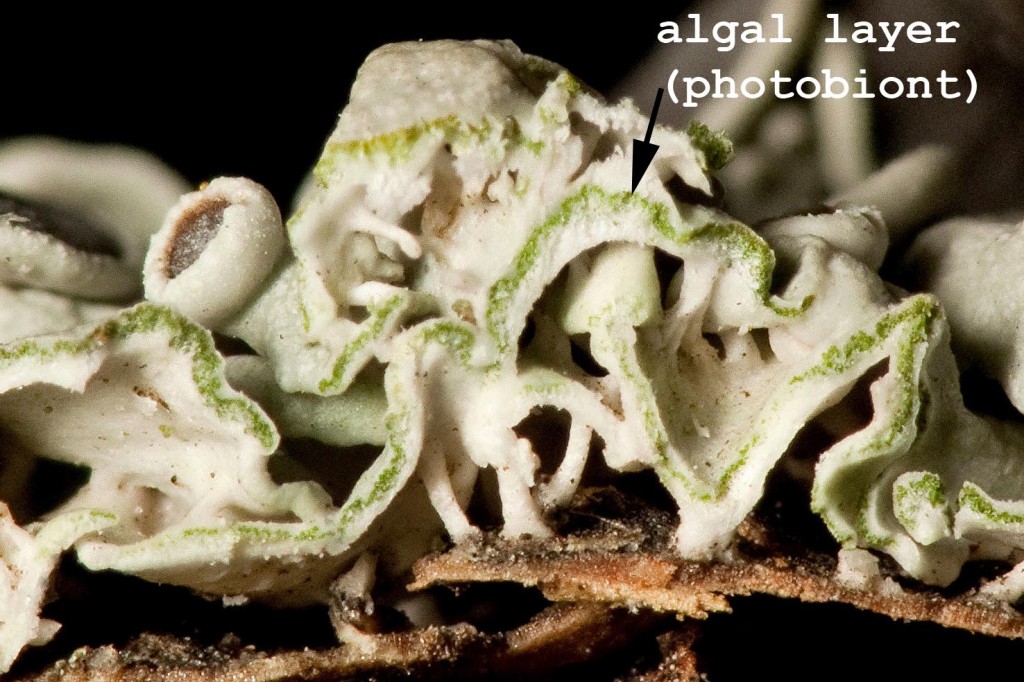
Cross-section of lichen showing algal (photobiont) layer.
Here’s a more detailed labelled cross-section.
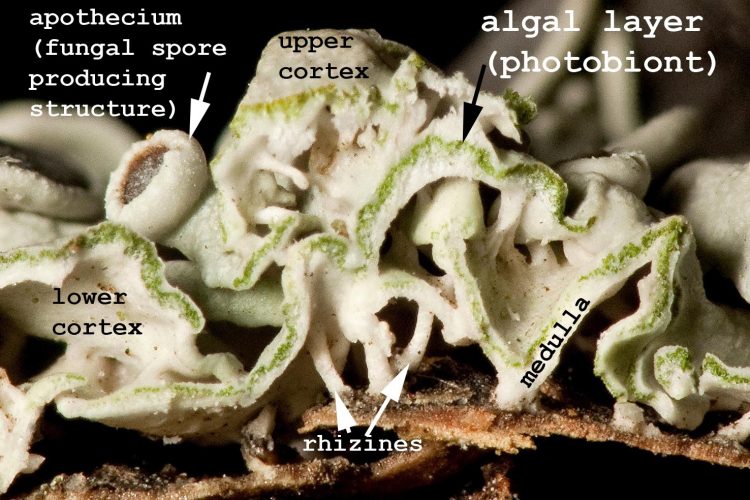
Details of foliose lichen cross-section.
Biologists consider lichens to be fungi and the scientific name of the lichen is also the name of the mycobiont. The photobiont has a different name.
A symbiotic relationship is beneficial to both partners. There are many symbiotic associations in nature – mycorhizal fungi and tree roots, ants and aphids, bacteria in cow’s stomachs, etc, etc. But lichens are unique because each partner loses its own identity and a new, different, dual organism is formed.
Lichens have several different growth forms – crustose, foliose and fruticose. Crustose lichens are crust-like and are very tightly attached to the substrate. They have an upper surface but no lower surface.
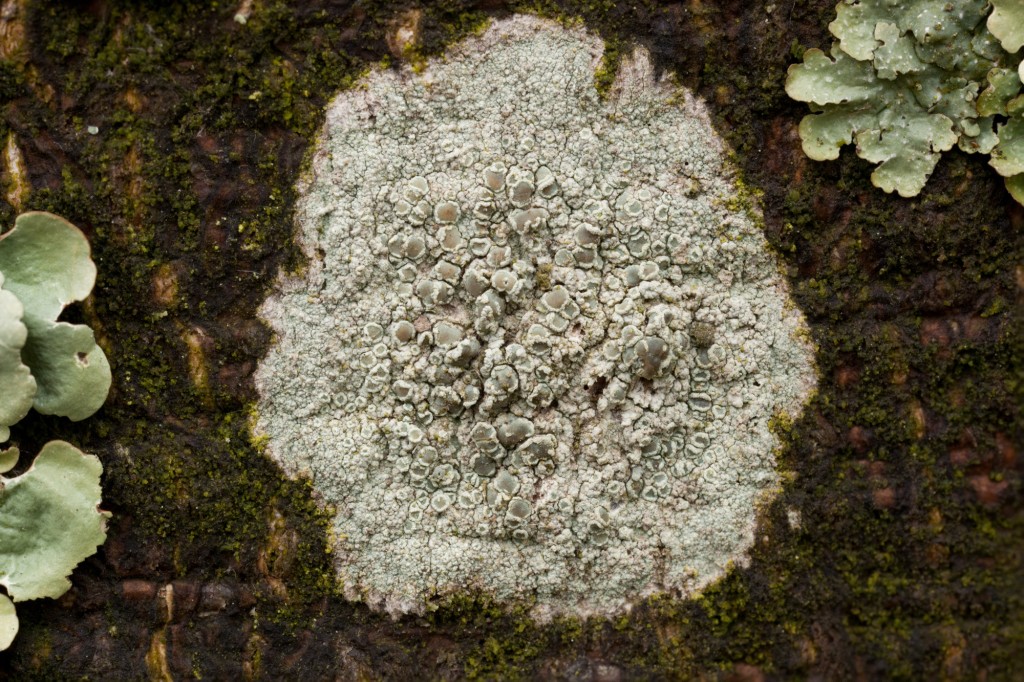 Crustose lichen (Lecanora hybocarpa).
Crustose lichen (Lecanora hybocarpa).
Foliose lichens are usually flat and leaf-like and can be loosely to tightly attached. They have an upper and a lower surface.
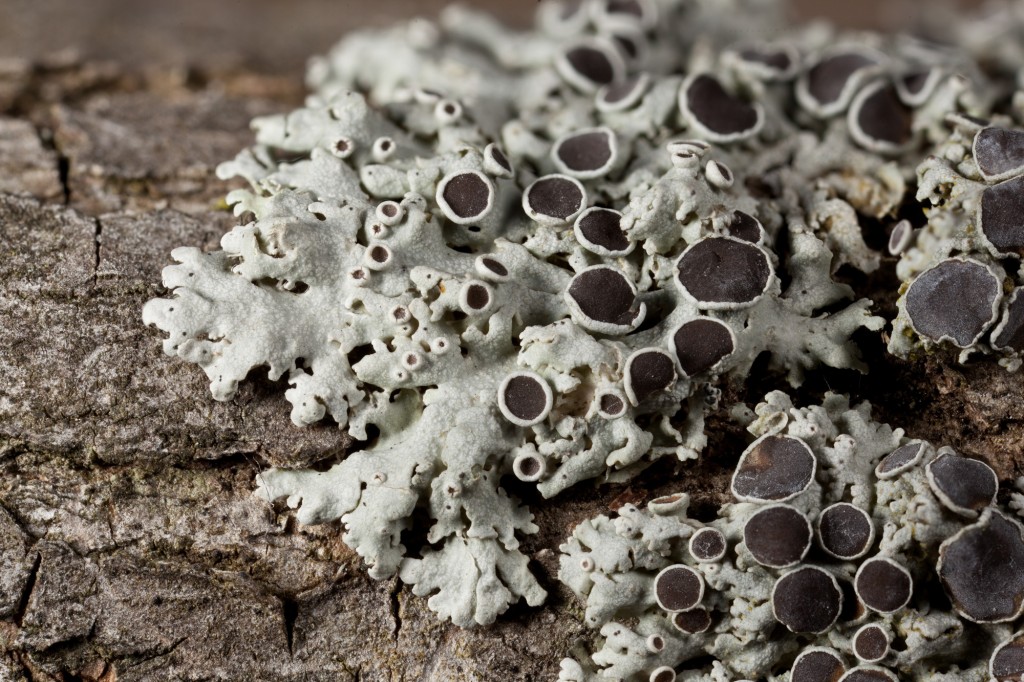
A foliose lichen (Physcia stellaris).
Fruticose lichens are upright and shrubby, or sometimes they hang down. Most fruticose lichens do not have a distinct upper and lower surface, but have an outer surface. 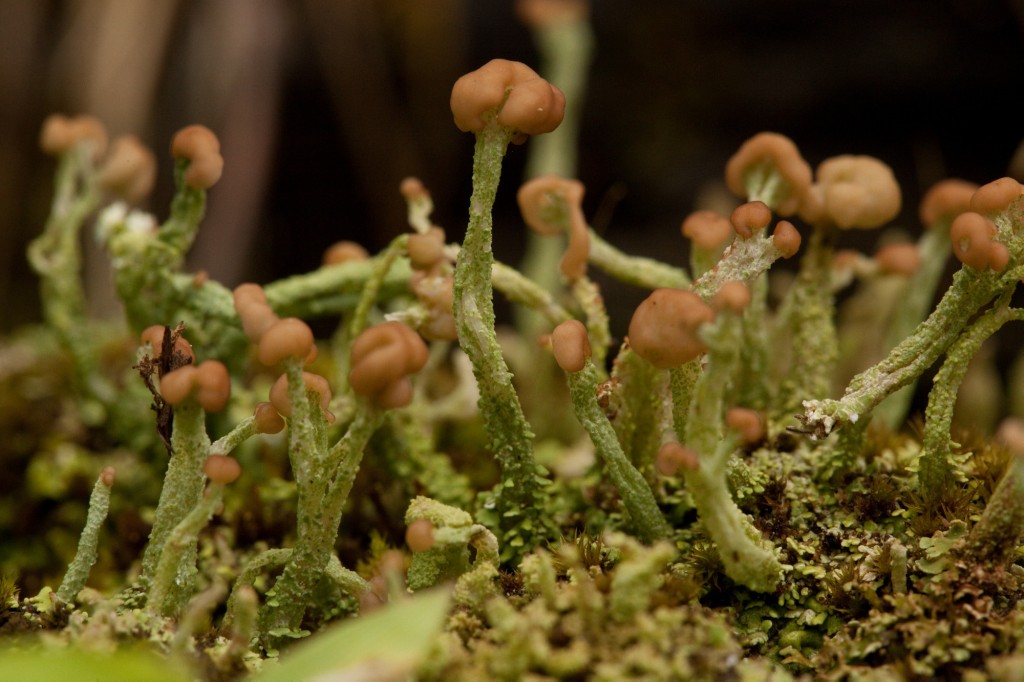
A fruticose lichen (Cladonia peziziformis)
The foliose and fruticose lichens are called macrolichens because they are generally easy to see without magnification. The crustose lichens are sometimes called microlichens.
Where do lichens live?
Lichens are found on every continent and are the dominant organisms on around 8% of the world’s land surface. This includes areas in the Arctic and Antarctic, and mountain tops.
Lichens are found on soil, rock or tree bark. Some will also grow on old wood (dead branches, fence rails, etc.), masonry and cemetery headstones. Lichens are often found in extreme environments where other organisms are sparse.
 Pyxie-cup lichens (Cladonia pyxidata) growing on soil.
Pyxie-cup lichens (Cladonia pyxidata) growing on soil.
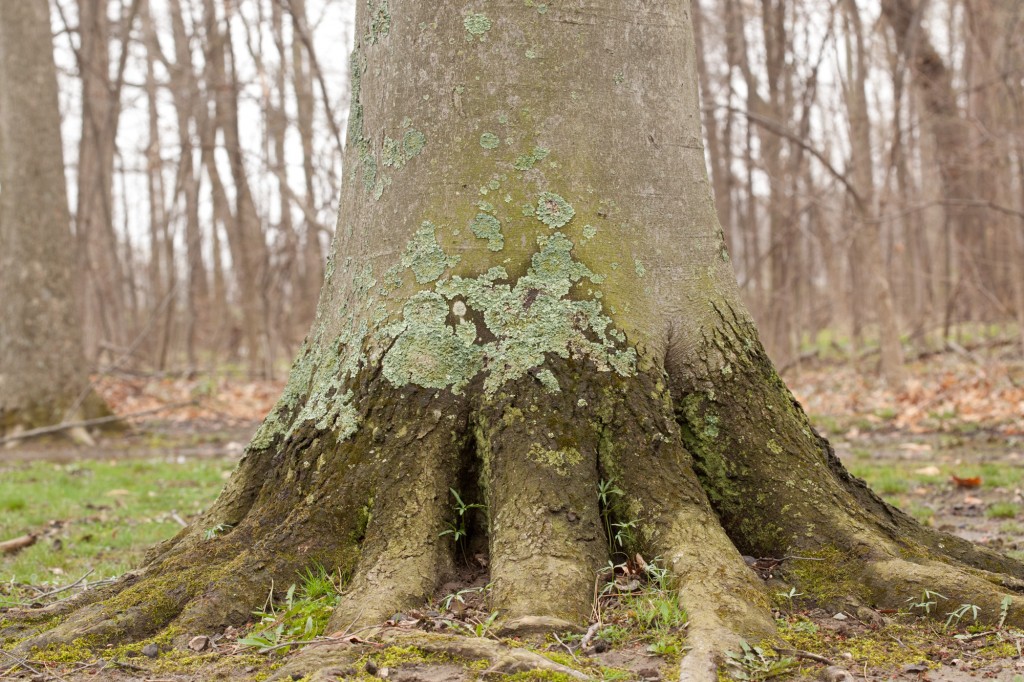
American beech tree with lichens on bark.
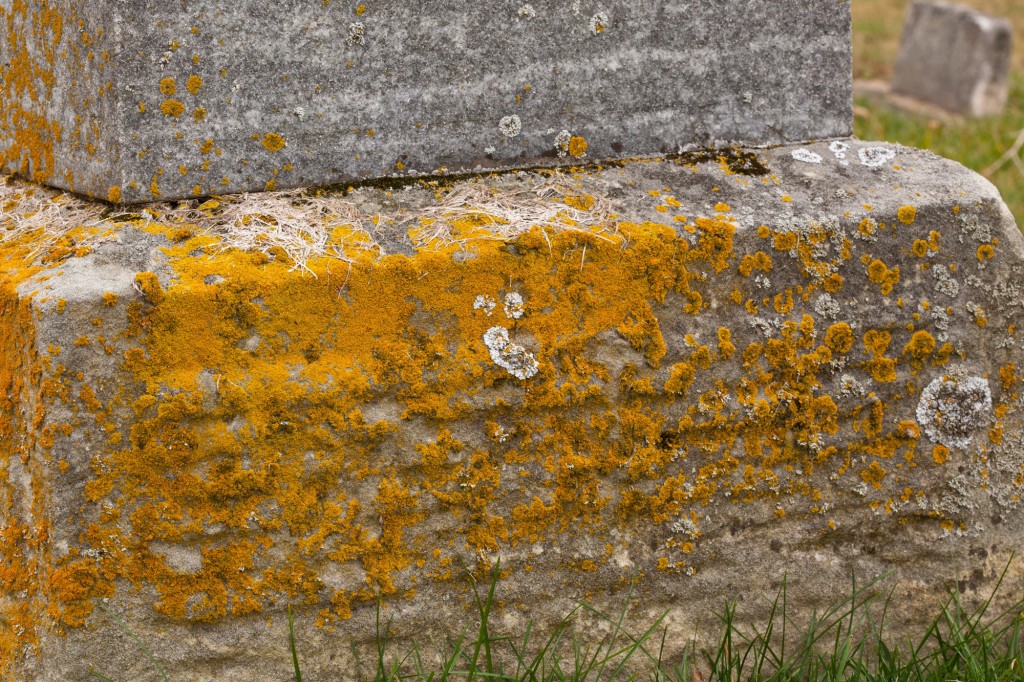
Rural cemetery headstone with lichens.
There are thought to be around 15,000 species of lichens worldwide. Ohio has 233 species of macrolichens and probably slightly more than that number of crustose species.
How do lichens reproduce and disperse?
Most reproduction and dispersion is probably by asexual propagules that contain both partners. Some lichens have tiny buds on the upper (or outer) surface called isidia. An isidium contains the upper (or outer) cortex and the photobiont layer.
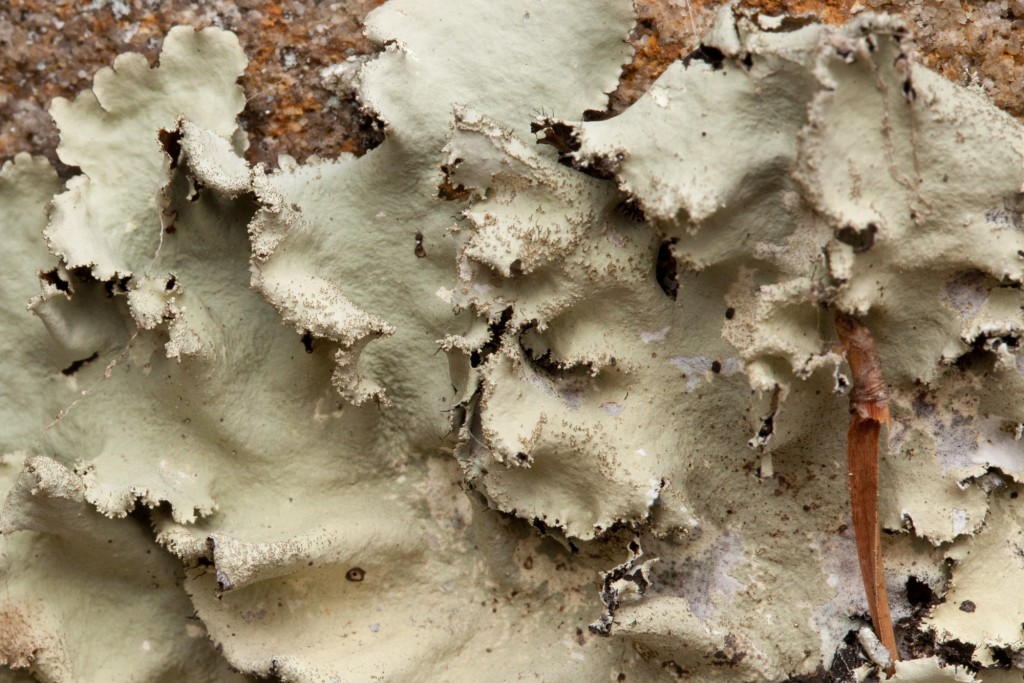
Isidia of Parmotrema xanthinum.
Other lichens produce soredia, eruptions from their interior that contain a few photobiont cells intermixed with fungal hyphae. A soredium is less structured than an isidium. These microscopic propagules are easily dislodged from the parent lichen and can be wind-born for long distances. They can also be moved to a new place by birds or insects.
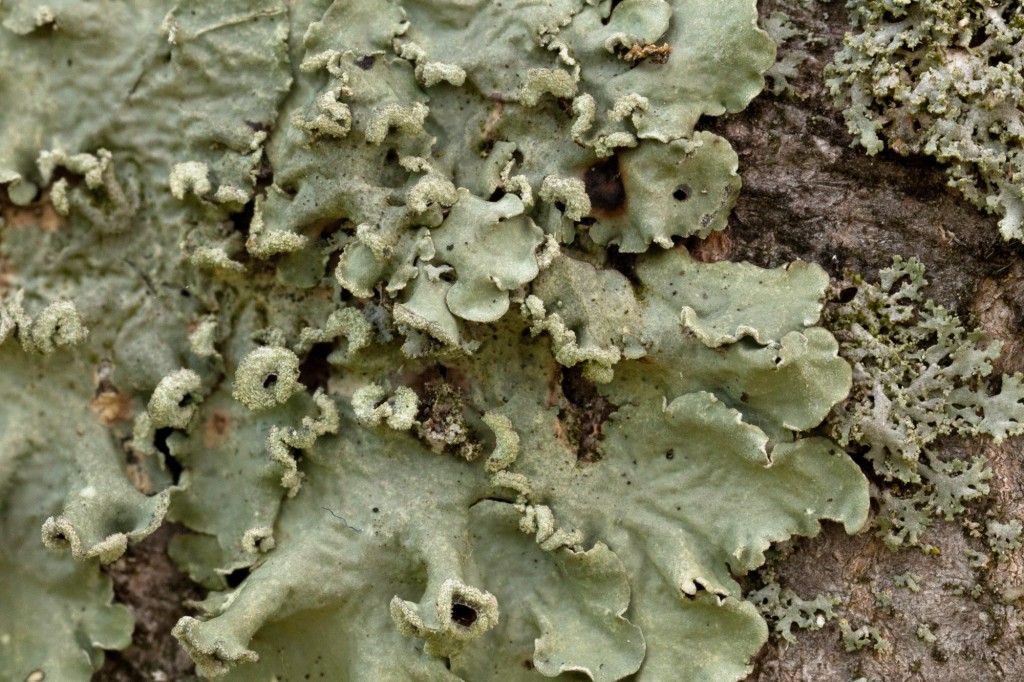
Soralia (groups of soredia) of Flavopunctelia soredica.
The mycobionts of some lichens produce sexual or asexual spores. These can be dispersed and germinate to produce a new fungus, but if a suitable photobiont is not immediately found, a new lichen will not be formed.
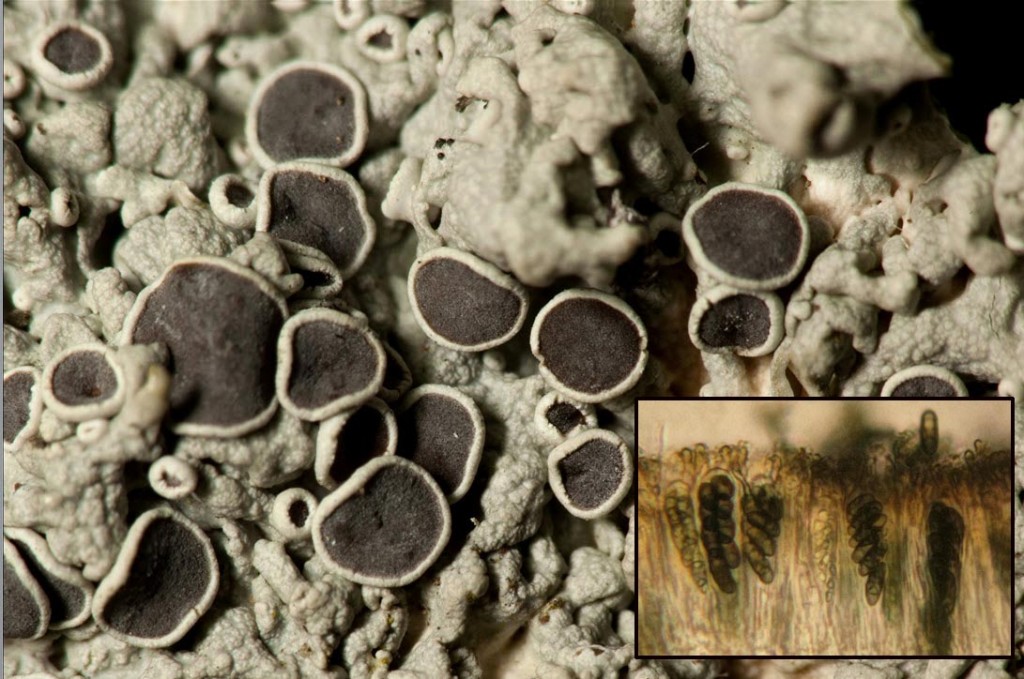
Spore producing structures of the lichen Physcia stellaris.
The large cup-shaped apothecia are aggregates of microscopic sac-like asci (inset)
Each ascus contains 8 ascospores.
Because lichens spread mostly by these microscopic propagules which can be wind-born for hundreds or even thousands of miles, some species are circumpolar – they are present both in North America and in northern Europe and Asia.
What role do lichens have in nature?
In Arctic regions, lichens play a major role in the ecology, usually as a winter food for grazing animals. In temperate regions, lichens play a more minor role. They are used by some birds as nesting material and they are used as shelter by some small insects and other invertebrates. Lichens may aid in the breakdown of rock into soil and some lichens (those with cyanobacteria as photobionts) can fix nitrogen and can thus add fertilizer to the ecosystem.
How are lichens used by people?
Many lichens produce complex organic chemicals as secondary metabolites. Their role is not certain but may be as protection from grazing, protection of the photobiont from strong sunlight, or as an allelopathic substance protecting against overgrowing by moss or other lichens. Most of the uses that people have found for lichens are based on these lichen substances. Some of these chemicals have antibiotic properties and are used in topical antibiotic creams. Some lichen extracts are also used as fixing agents in the manufacture of perfumes. Some lichen substances are colored and can be used as dying agents. These are still used for the earth tones in Navajo weavings. The indicator dye litmus was first extracted from lichens.
Some lichens are very sensitive to air pollution, particularly sulfur dioxide. They have been widely used as indicators of air quality to study air pollution patterns around cities and industrial areas. However, in most developed countries, air quality has improved to the extent that lichens are no longer affected and are returning to areas where they had been removed by air pollution.
Ray Showman 9/28/1
(photos by Bob Klips)
